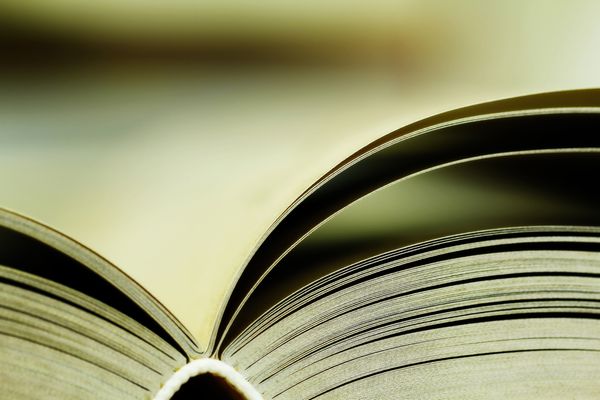2.3.5
Other Reading Theories
Other Reading Theories (1)
Other Reading Theories (1)
This next set of theories do not fit perfectly into any of the other sections but are still very useful for analysing and evaluating the question and data you may encounter in the examination.


Clay
Clay
- Clay says that when they are reading, children will notice mistakes that they make if they don’t fit with the rest of the text (and doesn’t make sense) – in this instance, the child will go back and repair what they said.


Making links
Making links
- You can link this when looking at books for children – the books for the younger learners will have a more predictable linguistic structure and as the reader becomes more advanced, the books become less predictable.
- You could link this to Goodman’s theory about the confirmation or rejection of a hypothesis when reading.


Perfetti
Perfetti
- Perfetti believes that reading is first and foremost about increasing the amount of words the child understands.
- From this, he argues, children learn patterns of phoneme-grapheme correspondence.
- Following this, the child then learns to accept or reject certain patterns in certain words.


Perfetti cont.
Perfetti cont.
- For example, the child may accept that the
digraph in ‘ghost’ is pronounced as /g/ and reject it in something like ‘cough’. - As a result, competency can come before comprehension in some cases (as the child may be able to say a word, but not know what it means).
Other Reading Theories (2)
Other Reading Theories (2)
This next set of theories don’t fit perfectly into any of the other sections, but are still very useful for analysing and evaluating the question and data in the exam!


Hirsh-Pasek
Hirsh-Pasek
- Psychologist, Hirsh-Pasek’s research states that when a child learns to read, they first go through a stage of decoding, followed by looking at the whole word’s semantic meaning.
- This is followed up with an understanding of the inferred and pragmatic meaning.


Hirsh-Pasek cont.
Hirsh-Pasek cont.
- Once this is developing, the child starts to gain an understanding of syntactic meaning.
- Following this, the child then learns how to comprehend strings of syntactical units in a wider discourse.


Vocabulary and interaction
Vocabulary and interaction
- In addition, Hirsh-Pasek believes that reading enriches the spoken language because it expands vocabulary and explores words in new and different contexts and it encourages interaction with caregivers (‘what does this word mean, mummy?’).


Gough and Hillinger
Gough and Hillinger
- Gough and Hillinger say that children go through two key stages in reading:
- The first being ‘early visual association’.
- The second being ‘decoding’.
- You should be able to link this to many of the other theories.
1Language Levels
1.1Assessment Objectives
1.2Lexis
1.2.1Introduction
1.2.2Common, Proper, Abstract & Concrete Nouns
1.2.3Collective Nouns
1.2.4Adjectives
1.2.5Main, Auxiliary & Copular Verbs
1.2.6Dynamic & Stative Verbs
1.2.7Transitive, Intransitive, Active & Passive Verbs
1.2.8Mood of Verbs
1.2.9Adverbs
1.2.10Personal, Possessive & Reflexive Pronouns
1.2.11Relative & Demonstrative Pronouns
1.2.12Determiners
1.2.13Conjunctions
1.2.14Synonyms, Antonyms & Phonological Features
1.2.15End of Topic Test - Lexis
1.3Grammar
1.4Semantics & Pragmatics
1.5Discourse Structure, Graphology & Orthography
2Language, The Individual & Society
2.1Children’s Language Development
2.2Children's Language Development - Theories
2.3Literacy Development: Reading
3Language Diversity & Change
3.1The Importance of Gendered Language
3.2Social Groups
3.3Occupational Groups
3.4Accents & Dialects
3.5Language Change
Jump to other topics
1Language Levels
1.1Assessment Objectives
1.2Lexis
1.2.1Introduction
1.2.2Common, Proper, Abstract & Concrete Nouns
1.2.3Collective Nouns
1.2.4Adjectives
1.2.5Main, Auxiliary & Copular Verbs
1.2.6Dynamic & Stative Verbs
1.2.7Transitive, Intransitive, Active & Passive Verbs
1.2.8Mood of Verbs
1.2.9Adverbs
1.2.10Personal, Possessive & Reflexive Pronouns
1.2.11Relative & Demonstrative Pronouns
1.2.12Determiners
1.2.13Conjunctions
1.2.14Synonyms, Antonyms & Phonological Features
1.2.15End of Topic Test - Lexis
1.3Grammar
1.4Semantics & Pragmatics
1.5Discourse Structure, Graphology & Orthography
2Language, The Individual & Society
2.1Children’s Language Development
2.2Children's Language Development - Theories
2.3Literacy Development: Reading
3Language Diversity & Change
3.1The Importance of Gendered Language
3.2Social Groups
3.3Occupational Groups
3.4Accents & Dialects
3.5Language Change
Unlock your full potential with Seneca Premium
Unlimited access to 10,000+ open-ended exam questions
Mini-mock exams based on your study history
Unlock 800+ premium courses & e-books